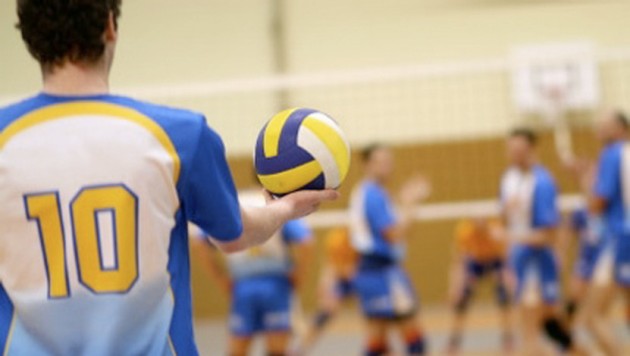
Volleyball serving
Serving the Floater, Part 4
In an era when jump serving is all the rage, why would anyone bother to serve the floater anymore?
Here’s a 4th reason:
Once you’ve mastered the basic technique, you can experiment with different speeds, which will make your floater even more difficult to receive.
Passers get into a groove as you serve to them more and more, so you constantly need to give them a different type of serve, just like a pitcher tries different pitches to each batter.
Try to mix it up. You’ll be more effective.
Reading Hitters, Part 11
As the ball is contacted by the hitter, it’s time to focus your entire energy and attention on the ball itself. The first thing you’ll need to do is FREEZE for an instant, wherever you find yourself. The moment of contact is not the time you want to be trying to get into position.
Stop wherever you find yourself and get ready to make a play. Don’t get caught in transition. Now is the time to get aggressive, and make your play, according to the flight of the ball.
Remember, if the ball is close, MAKE A PLAY FIRST, then decide if it was impossible!
Float Serving Basics, Part 1
A simple float serving technique that can score you some aces is hitting the ball on the stem. Simply toss the ball so that your hand contacts the serve directly on the stem.
Although you won’t be able to have complete control over its action, contacting the stem makes the ball behave erratically in the air. That erratic motion makes it harder for your opponent to pass, thus scoring you more aces.
Reading Hitters, Part 3
As you see the pass go into the air, you should now turn your attention to the setter as they move to the ball. Do they have a long way to go? Is the set far off the net, will they have to back set, how many options do they have?
All these factors will have an effect on what the setter will do next.
You can also pick up clues from the setter’s body language. If they move their shoulders back, chances are, a back set will follow, for instance.
Any body clues you can pick up as the game goes on will help you gain the advantage when it comes to reading where a set will go.
Pace
Here’s some good serving advice:
Remember serving is the only time you really control the pace. Especially if you’re behind, take your time to give your team a chance to catch its breath.
Read the Label
Here’s a good serving tip:
When serving, hold the ball with the label facing you so you can “read” it. This gives you a focal point to strike and reduces distractions.
Middle Blocking, Part 4
Middle blockers rule the net. They need to be warriors, constantly in motion, relentlessly aggressive on offense and defense.
To be an effective CF (Center Front), you must love to work hard and be involved in every play. You’re like the shot blocker in basketball. You have to dominate the net, and make it your own, make opposing hitters think about what they’re doing, change their shots, throw off their game.
Here’s tip 4 for playing tough CF:
Wait an extra 1/2 second when blocking a back row attack. And make certain you have a good chance to get it, because your block may obscure the vision of your teammates, getting ready to dig in the back row.
Reading Hitters – Part 5
As you watch the flight of the ball for location, height and speed, you’ll pick up valuable tips on where the ball is likely to be hit.
We’ve talked about location in relation to the net. The next variable is height. If the ball is below the height of the net, it will likely be hit offspeed or tipped. Adjust accordingly. A high set gives the hitter many more options, and you’ll need to pick up more clues, body language, etc.
Serving More Aces, Part 2
Regardless of whether you’ve seen a team or not, you can maximize your ace totals by looking for the switch on the serve receive and serving to that area. The area where the setter and another player are standing close to each other is congested, and putting your serve into that place will cause even more confusion.
Read more news from our Did You Know? section.
Check out our Fitness section, every Saturday a new story! Tomorrow read about …